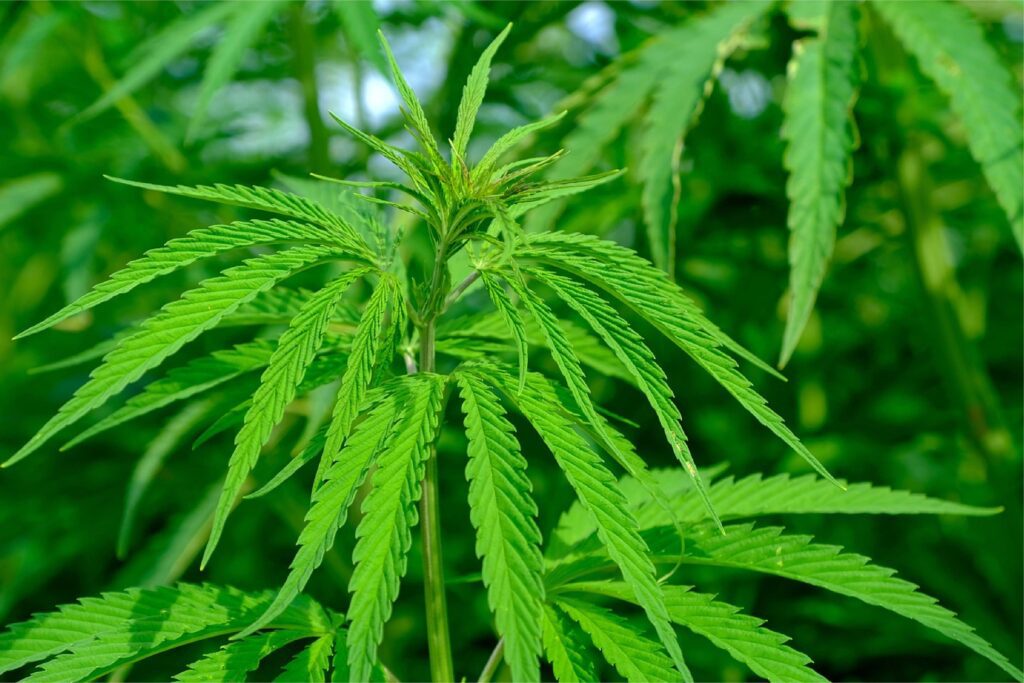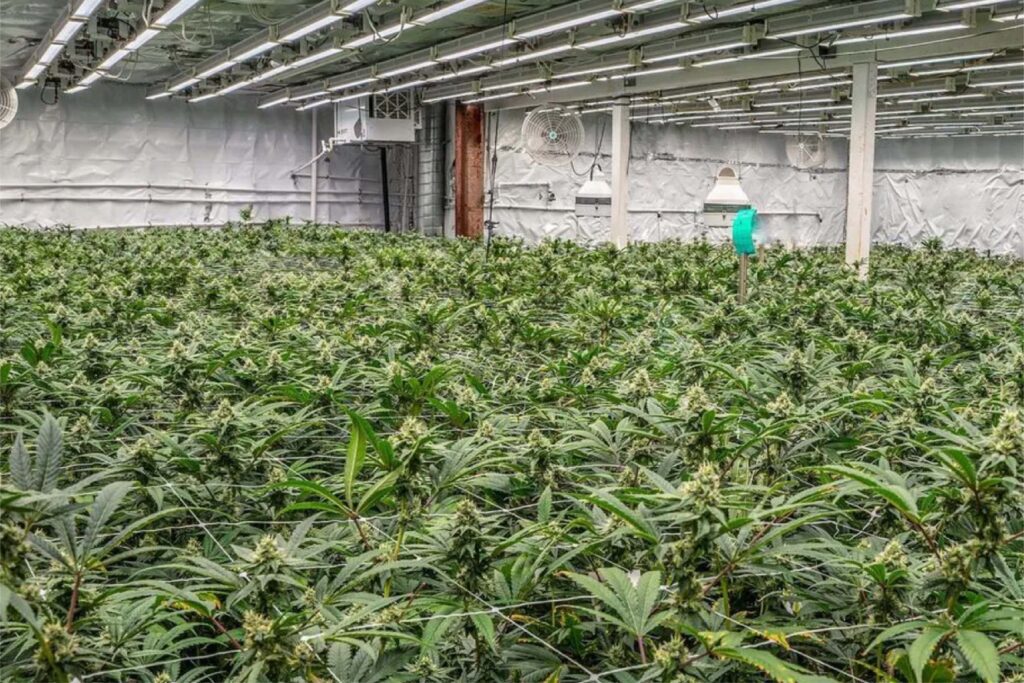The categorization of cannabis strains often falls into three main types: indica, sativa, and hybrid. These classifications are rooted in the physical and genetic differences between the plants, as well as the varied effects they are believed to have on their users.
Indica strains are typically associated with a more relaxing, body-centric high, while sativa strains are said to produce an energizing, cerebral effect. Hybrids are a blend of indica and sativa attributes, creating a balance between the two.
As breeding techniques have advanced, hybrids have become increasingly popular, offering a more nuanced range of effects that cater to individual preferences and therapeutic needs.
By the end of this post, you’ll understand all the nuances of these strain types and how to pick the best strain for your individual needs.
Classification of Cannabis Strains
Cannabis cultivars are primarily classified into three distinct categories:
- Indica
- Sativa
- Hybrid
Different strains have unique characteristics in terms of physical appearance, effects, and cultivation requirements.
Indica

Cannabis indica plants are typically shorter and bushier, with broader leaves. They originated from the Hindu Kush mountains of India, hence their name.
Indica strains are known for their sedative effects, which often result in a full-body relaxation. Users frequently choose Indica strains for nighttime use, as they can help with sleep and alleviate stress. They are a favorite for medical marijuana patients due to their self-proclaimed
- Primary effects: Relaxation, Sleepiness, Stress Relief
- Common uses: Insomnia, Anxiety, Pain Management
The following are some of the most popular indica cannabis strains:
- Granddaddy Purple: Known for its distinctive purple hues and grape and berry aroma, Granddaddy Purple is a staple Indica strain that delivers a fusion of cerebral euphoria and physical relaxation.
- Northern Lights: One of the most famous Indica strains, Northern Lights is prized for its fast-acting effects that deliver a comfortable laziness and muscle relaxation. It’s known for its resinous buds, fast flowering, and resilience during growth.
- Afghan Kush: Originating from the Hindu Kush mountain range, Afghan Kush is a pure Indica strain. It is renowned for its heavy resin production and deeply sedative effects, making it a favorite for hash production.
- Blue Cheese: This strain is known for its unique blend of blueberry and cheese flavors, offering a relaxing and euphoric high. It’s a great choice for those looking to unwind at the end of the day.
- Bubba Kush: With a sweet, earthy flavor profile, Bubba Kush delivers heavy tranquilizing effects. It’s a go-to strain for those seeking to alleviate stress and sleeplessness.
- Hindu Kush: Another pure Indica strain, Hindu Kush offers a calm, meditative high and is known for its sweet and earthy aroma. It’s highly appreciated for its stress-relieving properties.
Sativa

Cannabis sativa plants, in contrast, are taller with narrower leaves. These strains thrive in warmer climates and tend to have a longer flowering period than their Indica counterparts.
Sativa strains are celebrated for their energizing and cerebral effects that may enhance creativity and focus. Users often prefer Sativa strains during the day for their uplifting properties. They are often the go-to cannabis strain for a cerebral high.
- Primary effects: Energy, Creativity, Uplifted Mood
- Common uses: Fatigue, Depression, Attention Disorders
The following are some of the most popular sativa strains:
- Sour Diesel: Known for its pungent, diesel-like aroma, Sour Diesel is a fast-acting strain that delivers energizing, dreamy cerebral effects. It’s favored for stress, pain, and depression relief.
- Green Crack: Despite its intense name, Green Crack is popular for its tangy, fruity flavor and its sharp energy and focus. It’s great for daytime use to combat fatigue and stress.
- Jack Herer: Named after a legendary cannabis activist, Jack Herer is renowned for its blissful, clear-headed, and creative effects. It has a spicy, pine-scented aroma and is used for both recreational and medicinal purposes.
- Durban Poison: Originating from the South African city of Durban, this strain is famous for its sweet smell and energetic, uplifting effects. It’s a great strain for staying productive or for those who need a mood boost.
- Super Lemon Haze: As the name suggests, this strain has a zesty, citrusy aroma and flavor, with lively, energetic effects. It’s a winner of multiple Cannabis Cups and is loved for its euphoric and social high.
- Strawberry Cough: Known for its sweet strawberry smell and subtle aftertaste, this sativa strain is great for a comfortable yet energizing effect, often leading to a more settled and uplifted mood.
- Amnesia Haze: With earthy flavors of lemons and citrus, Amnesia Haze is a perfect blend of uplifting and energetic effects, often chosen for its ability to induce euphoria and increase creativity.
Hybrid

Hybrid cannabis strains are crafted through the breeding of Indica and Sativa plants. These varieties aim to blend the best aspects of both parents, resulting in a wide range of effects, appearances, and growth characteristics.
The effects of hybrid strains can vary significantly from one to another, depending on the lineage and breeding goals. Hybrids offer a vast spectrum, from Indica-dominant to Sativa-dominant, and any blend in between.
- Balance of effects: Varies based on Indica/Sativa ratio
- Common uses: Tailored for specific user needs and preferences
The following are some of the most common hybrid cannabis strains:
- Blue Dream: A Sativa-dominant hybrid, Blue Dream is famous for its soothing and relaxing effects that don’t sedate, making it perfect for easing pain, depression, and nausea while maintaining productivity.
- GG4 (formerly Gorilla Glue #4): Known for its potent effects that can glue you to the couch, GG4 offers a heavy-handed euphoria and relaxation, making it a favorite for managing stress, pain, and insomnia.
- Girl Scout Cookies (GSC): This hybrid is renowned for its sweet and earthy aroma, delivering a euphoric high and strong relaxation. It’s used medicinally for severe pain, nausea, and appetite loss.
- OG Kush: A classic hybrid with a reputation for its strong euphoric and relaxing effects, often accompanied by an uplift in mood. It’s known for its distinct earthy pine and sour lemon scent with woody undertones.
- White Widow: A balanced hybrid first bred in the Netherlands, White Widow is famous for its resin production and energizing yet relaxing effects, making it great for stimulating creativity and conversation.
- Sour OG: A cross between Sour Diesel and OG Kush, Sour OG is appreciated for its balanced effects that offer both a notable euphoria and substantial relaxation, making it a good choice for social situations.
- Pineapple Express: Popularized by the movie of the same name, this strain offers a long-lasting energetic buzz perfect for productive afternoons and creative escapes. Its tropical, pineapple-tinged flavor is also a crowd-pleaser.
- Cherry Pie: Known for its sweet and sour cherry aroma, Cherry Pie’s balanced effects deliver a euphoric, creative high while also offering physical relaxation, making it great for those looking to ease tension without heavy sedation.
Cannabinoid Profiles of Indica vs Sativa vs Hybrid
Cannabinoid profiles are a critical aspect distinguishing the effects of Indica, Sativa, and hybrid strains. They influence potency, therapeutic potential, and the user’s experience.
THC and CBD Ratios
Indica, Sativa, and hybrid strains exhibit varying ratios of THC (tetrahydrocannabinol) to CBD (cannabidiol). Strains high in THC are known for their potent psychoactive effects, while those with higher CBD concentrations are less likely to induce intoxication and are often valued for their potential therapeutic benefits.
- Indica often contains higher CBD and lower THC.
- Sativa typically features higher THC and lower CBD.
- Hybrids present a balance, with the ratio depending on the parent strains.
Other Cannabinoids and Their Effects

Beyond THC and CBD, cannabis plants contain other cannabinoids like CBG (cannabigerol), CBC (cannabichromene), and CBN (cannabinol), which can produce varied effects in both indica and sativa strains.
Research on these cannabinoids is still evolving, but early studies and anecdotal evidence suggest they have unique benefits:
CBG (Cannabigerol)
- Pain Relief: CBG may help in managing pain without the psychoactive effects associated with THC.
- Anti-inflammatory Properties: It has been shown to reduce inflammation, making it potentially beneficial for conditions like inflammatory bowel disease.
- Neuroprotective Effects: Early studies suggest CBG might protect neurons in neurodegenerative diseases such as Huntington’s disease.
- Antibacterial Properties: CBG has been found to act as an antibacterial agent, particularly against MRSA (Methicillin-resistant Staphylococcus aureus).
- Eye Health: It may help in treating glaucoma by reducing intraocular pressure.
CBC (Cannabichromene)
- Anti-inflammatory: Similar to CBG, CBC has shown promise in reducing inflammation and could potentially aid in the treatment of conditions like osteoarthritis.
- Antidepressant: Some research suggests that CBC may contribute to the overall mood-lifting properties of cannabis.
- Neurogenesis: CBC might play a role in neurogenesis (the growth and development of nervous tissue), which is rare and significant for neurohealth.
- Antifungal and Antibacterial: Early research indicates CBC may have antifungal and antibacterial properties.
CBN (Cannabinol)
- Sedative Effects: CBN is often cited for its sedative effects, although this may be more pronounced when it is used in combination with THC.
- Pain Relief: It may work as a pain reliever, particularly when combined with CBD.
- Anti-inflammatory: Like CBG and CBC, CBN has shown potential as an anti-inflammatory agent.
- Neuroprotectant: CBN might have neuroprotective properties, potentially helping with conditions like ALS (Amyotrophic Lateral Sclerosis).
- Appetite Stimulation: Early studies suggest CBN could stimulate appetite, making it a potential alternative to THC for this purpose without the psychoactive effects.
Medical Applications
Indica in Medicine
Indica strains are utilized for their sedating properties. They are often recommended for nighttime use. Indica may help with:
- Sleep disorders: Promotes restful sleep
- Chronic pain: Relieves body pain and discomfort
- Anxiety and stress: Reduces symptoms of anxiety and promotes relaxation
- Muscle spasms: Helps alleviate spasms and tremors
Sativa in Medicine
Sativa strains are recognized for their uplifting effects. They are commonly used for daytime treatment. Sativa may aid in:
- Mood disorders: Improves symptoms of depression by enhancing mood
- Fatigue: Combats feelings of tiredness and boosts energy
- Attention disorders: May increase focus in individuals with ADHD
- Chronic pain: Provides a different quality of pain relief suited for daytime
Hybrid in Medicine
Hybrid strains incorporate qualities of both indica and sativa. They are bred to address specific health issues. Hybrid strains can vary widely but may offer:
- Balanced relief: Mix of relaxation and alertness
- Tailored effects: Bred for specific therapeutic outcomes
- Versatility: Useful for a variety of conditions depending on the dominant strain attributes
Cultivation Practices

Cannabis cultivation varies depending on the particular marijuana strain. Each strain requires specific practices to optimize growth, yield, and quality.
Indica Strain Cultivation
- Climate Preference: Indicas prefer cooler, dry climates.
- Physical Characteristics: The cannabis plant is shorter and bushy, with wider leaves.
- Flowering Time: Indicas have a shorter flowering period, usually around 8 weeks.
- Growth Patterns:
- Indoor Yield: 1.5 to 2 ounces per square foot
- Outdoor Yield: Up to 6 ounces per plant
- Cultivation Difficulty: Relatively easy to grow due to their compact size.
Sativa Strain Cultivation
- Climate Preference: Sativas thrive in warmer, humid climates.
- Physical Characteristics: They are tall, slender plants with narrow leaves.
- Flowering Time: Sativas have a longer flowering period, often exceeding 10 weeks.
- Growth Patterns:
- Indoor Yield: 0.5 to 1.5 ounces per square foot
- Outdoor Yield: Up to 3 pounds per plant
- Cultivation Difficulty: Challenging due to their height and longer flowering time.
Hybrid Strain Cultivation
- Climate Preference: Varies according to the specific genetic mix.
- Physical Characteristics: Display traits from both Indica and Sativa parents.
- Flowering Time: Varies, but typically falls between the flowering times of Indicas and Sativas.
- Growth Patterns:
- Indoor Yield: Variable, depending on genetic dominance
- Outdoor Yield: Can range widely depending on hybrid characteristics
- Cultivation Difficulty: Depends on the dominant strain traits. Hybrid plants can offer a balance between Indica and Sativa growth patterns.
Future of Cannabis Breeding
The cannabis industry is evolving rapidly, and the future of cannabis breeding promises to focus on genetic specificity and diversity. Continued research into the genomic architecture of cannabis plants will likely lead to the development of strains with tailored cannabinoid and terpene profiles.
- Precision Genetics: Breeding programs are expected to adopt technologies like CRISPR, enabling precise editing of plant DNA. This may allow breeders to amplify desired traits such as yield, pest resistance, or specific cannabinoid concentrations.
- Disease Resistance: As pathogens evolve, new cannabis strains will be engineered to resist modern diseases and pests to ensure crop stability.
Final Thoughts
Understanding the nuances between Indica, Sativa, and Hybrid marijuana strains offers insights into their respective benefits and applications.
Indica strains are ideal for evening use, providing relaxation and pain relief, while Sativa strains energize and enhance creativity, making them suitable for daytime.
Hybrid strains, which are becoming increasingly popular, merge the best of both worlds to cater to a wide array of preferences and therapeutic needs.
We hope this post has helped inform you and given you the information you need to pick the right strain for your needs. Thanks for reading, and if you live in California’s Central Valley, be sure to take advantage of our cannabis delivery service for your next Indica, Sativa, or hybrid purchase!



